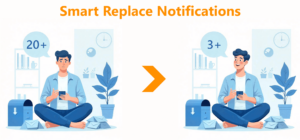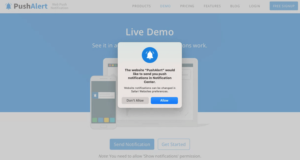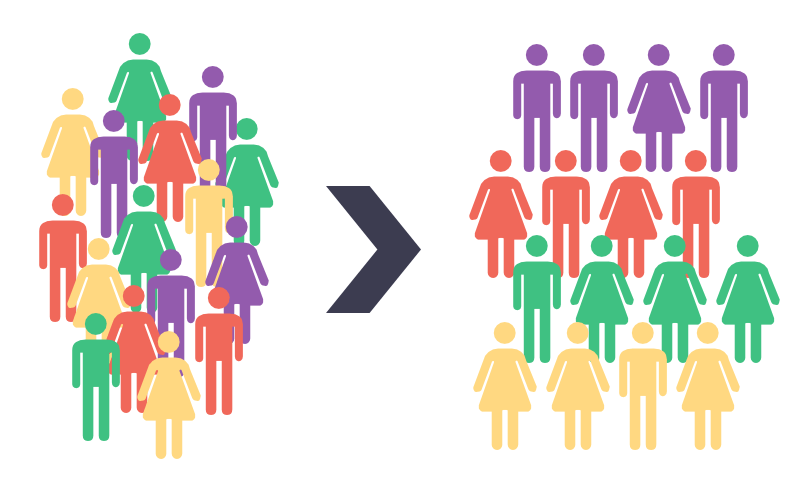
Audience Segmentation for Push Notifications
Each one of your customers is different. They buy different products, they are online at different times of the day, so a “same size fits all” approach really doesn’t work here. However, it is near impossible to put each and every subscriber under a microscope to understand their behavior. This is where Audience Segmentation comes in.
What is Audience Segmentation?
The first thing to understand here is that your audience is dynamic. Whether you have a few thousand subscribers or millions, they are constantly getting updated. You have new subscribers coming in and some unsubscriptions. Churn is part of the natural process.
With Audience Segmentation, you can automate the process of understanding your dynamic audience. There’s no need to manually sift through your list to understand demographics, user actions or behavior on the website. Instead, you can use an automated segmentation tool, like PushAlert does, to do the job for you. This helps in identifying patterns in your audience that you didn’t know existed.
You can segment users based on their actions on the website, location as well the device they were using and time of visit.
Let’s start with an example:
We want to create a segment of subscribers who visited the website within the last 2 days, looked at a particular product and live in San Francisco, US. Now, you can send a notification to this segment talking about the product. You can also send a specific discount or instill a sense of urgency, saying that it is selling fast.
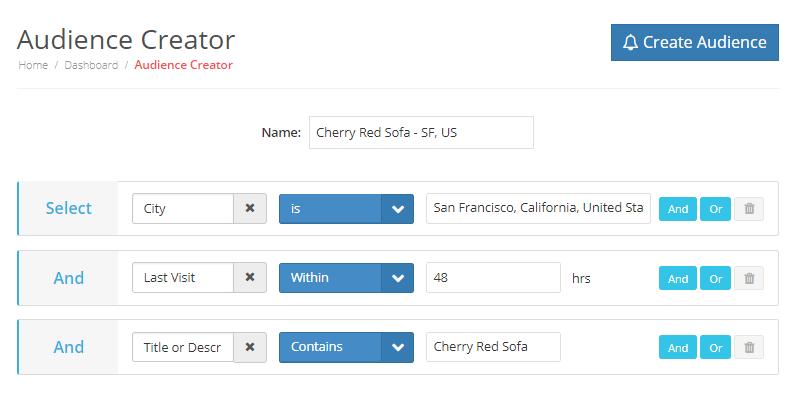
PushAlert Audience Creator – Built-in Audience Segmentation Tool
Why should you segment your subscribers?
The first question that may have come to your mind is why is it necessary to segment subscribers. Especially when you are getting far more clicks when broadcasting notifications.
1) The “Spray and Pray” marketing approach is wasteful and doesn’t always work.
Push Notifications are direct and provide the option of reaching your customers in an instant, in real-time. This channel combines the power of traditional mass marketing mediums like television or newspapers in terms of reach, along with the ability to send more targeted, personalized communication. No matter what a customer is doing, the push notification will be visible to them on their device, analogous to adverts when you are watching television or those in a newspaper.
When you are not segmenting your audience, you are harnessing half the power of Push Notifications.
There are several drawbacks to sending mass notifications to your entire audience:
- Many subscribers will not click on the notification as it is not relevant to them. Bringing down your overall click-through rate.
- Your customers may unsubscribe, as they feel spammed with non-relevant, miss-timed notifications.
- This would also adversely affect traffic you are getting from push notifications.
Conversely, if you use subscriber segmentation, you recognize that:
- Your subscribers go through different journeys on your website.
- The subscribers may be interested in different products.
- Some may use their desktop and some their mobile devices to make the purchase.
- Your subscribers come from different parts of the world with varied time zones.
In this way, segmentation can help reach your goals without leaving anything to chance. It reduces drop-off, boost sales and skyrocket CTRs.
2. Segmentation helps in converting clicks into purchases.
When you broadcast a notification to a large audience, you are bound to get a lot of clicks. Although, your click-through rate tells only half the story. There are other KPIs to look for, especially conversion rate and bounce rate. Are your subscribers simply bouncing-off after coming to the website or are they converting?
While subscribers may click on a notification simply out of curiosity, if they are given a value-add, such as a product they like on discount or back-in-stock, you can lead them to a conversion. So high click rates need not mean more conversions.
Segmentation helps in reaching to the audience that is most likely to convert.
Consider this example, from the point of view of your customer. Let’s say you run an online travel website and some of your subscribers were looking for flights to Venice. With Audience Segmentation, you can send a personalized push notification about the “10 Best Hotels in Venice with Canal Views” or an even broader notification “10 Things to do when you are in Venice”. This not only helps build rapport with your subscribers but also boosts user experience, building customers for life.
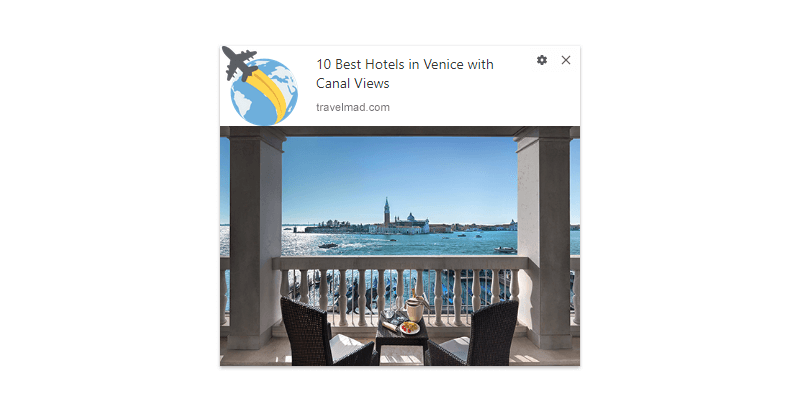
Audience Segmentation Based on User Behavior
3. Personalization and segmentation go hand in hand.
According to a report by Accenture, 75% of consumers are more likely to make a purchase from a retailer if they recognize them by name, recommend products based on past purchases or know their purchase history. Customers value personalization, recommendations, and the feeling of being recognized based on their previous purchases. They feel frustrated when a website is not personalized based on their behavior, and the same report from Infosys also says 59% of customers said that personalization paid an important part in their shopping decision.
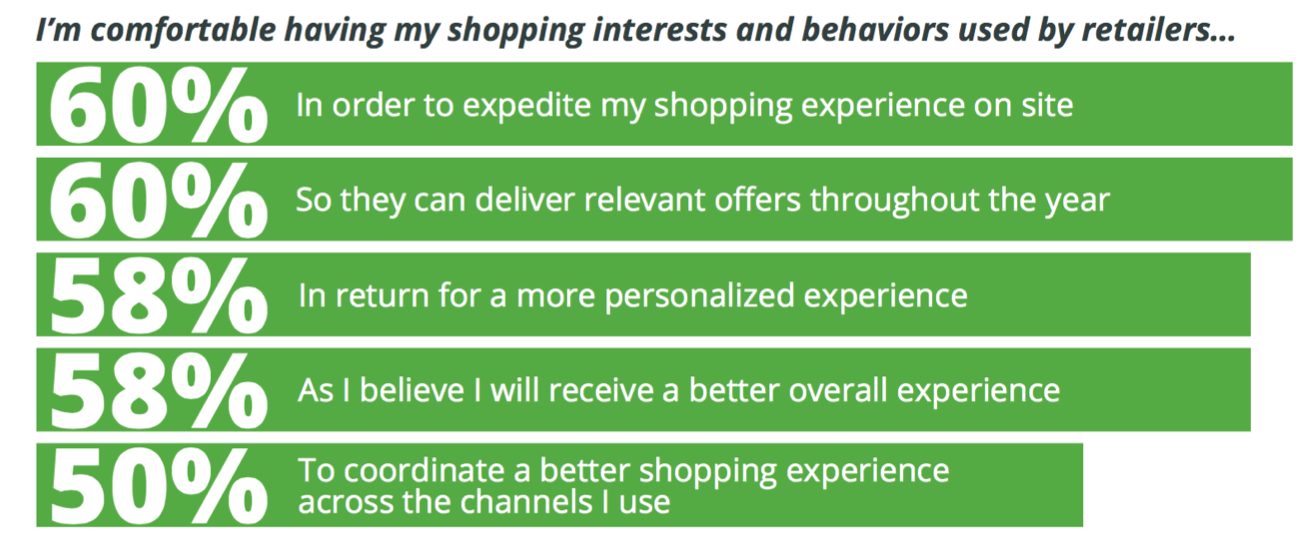
Source: Magnetic/MyBuys
Customers today are tech-savvy, they understand that for providing personalized shopping experiences, marketers need to track their behavior. A survey by Magnetic/MyBuys found that consumers are willing to allow retailers to use their interests and behaviors to provide a better/customized shopping experience.
This applies to push notifications as well. Broadcasting non-relevant notifications to customers simply annoy them and may lead to an instant unsubscription. Instead, with segmentation, you can surprise and delight customers. While Segmentation is just the first step towards personalization, it still helps you offer a far better user experience.
There are more advanced features like Triggered Notifications, and Conversion Funnels, which follow the journey of the customer on your website. But these need a bit of work on your end, but segmentation is the easiest to start with. Simply create a copy with a title, message, a delightful image for a particular segment and send it along. You can also add a hero or large image to notifications, to make them pop instantly or add a couple of CTA – Call-to-Action buttons to further customize the notification.
4. Going one step further
Push Notifications offer one-to-one direct personalized communication as well. With this level of personalization, you can send targeted notifications on the customers’ abandoned carts, products they like back in stock, as well as shipment updates. You can also send discounts for specific products in the customers’ wishlist to ensure a conversion. This not only surprises your customer but also delights them, that you are recognizing them as individuals. Although segmentation at this level does require a bit of work on your end, the rewards are aplenty. It makes notifications more intelligent and intuitive. Instead of a distraction, customers will look forward to your next notification in anticipation.
More importantly, triggered notifications, conversion funnels and deeper segmentation with attributes have to be set only once and then you can forget about them. At PushAlert, these are all dynamically updated based on changes to your audience and their behavior.
You should now be convinced about the importance of segmentation in push notifications if so, sign up for a free account here and start using our Audience Creator. If you found this article useful, subscribe to stay updated.

